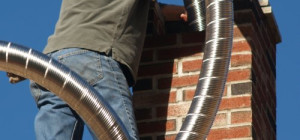Aluminum sheet metal is a versatile and widely used material in various industries, known for its durability, lightweight nature, and excellent corrosion resistance. Whether you are a seasoned engineer or a DIY enthusiast, understanding the fundamentals of aluminum sheet metal design can unlock a world of possibilities.
In this comprehensive guide, you will find the entire process – from conceptualizing your project to the final creation. Explore the availability of aluminum sheet metal for sale, ensuring you have the right materials for your endeavors.
Understanding Aluminum Sheet Metal
Before detailing the design process, comprehend the characteristics of aluminum sheet metal. Aluminum is a non-ferrous metal, meaning it doesn’t contain iron, making it rust and corrosion-resistant. Its lightweight nature, malleability, and conductivity make it an ideal choice for a variety of applications, from aerospace components to household items.
Conceptualizing Your Project:
Every successful design starts with a clear concept. Whether you’re creating a prototype for a new product or fabricating a custom part, define your project’s purpose, functionality, and design requirements. Consider factors like size, shape, thickness, and any specific features your project demands. This initial phase sets the foundation for a successful aluminum sheet metal design.
Material Selection:
After conceptualizing your project, choose the right aluminum sheet metal. Assess the alloy, temper, and thickness options available. Different alloys offer varying strengths, corrosion resistance, and weldability. The temper determines the metal’s hardness and flexibility, aligned with your project’s requirements. For example, a softer temper might be suitable for deep drawing, while a harder temper is ideal for structural components.
Design Software and Tools:
Utilize design software to translate your ideas into precise specifications. CAD (Computer-Aided Design) software allows you to create detailed 2D and 3D models, ensuring accuracy and efficiency in the design process. Consider using simulation tools to test the structural integrity and performance of your design before moving to the manufacturing phase.
Precision in Measurements:
Accurate measurements are crucial in aluminum sheet metal design. Any discrepancies can result in a flawed final product. Double-check all dimensions and tolerances to ensure your design meets the desired specifications. This meticulous approach will save time and resources during the manufacturing process.
Prototyping and Testing:
Before mass production, create a prototype to validate your design. This step allows you to identify potential flaws, assess the functionality, and make necessary adjustments. Testing the prototype ensures that the final product meets your expectations and industry standards. It’s an essential phase in the aluminum sheet metal design process to avoid costly mistakes later on.
Manufacturing Process:
Once your design is finalized and the prototype successfully tested, bring your creation to life. The manufacturing process involves cutting, bending, and shaping the aluminum sheet metal according to your design specifications. Precision machinery and skilled technicians ensure the accuracy of the final product.
Finishing Touches:
Additional finishes or coatings enhance the appearance and functionality of your aluminum sheet metal creation. Finishing options include anodizing, powder coating, or applying a protective layer to improve corrosion resistance. These finishes not only enhance aesthetics but also contribute to the product’s longevity.
Aluminum Sheet Metal for Sale:
Securing quality aluminum sheet metal for your project is an essential step. Numerous suppliers offer a wide range of aluminum sheet metal for sale. When choosing a supplier, consider factors like material quality, available alloys, and the supplier’s reputation. Purchasing from a reliable source ensures you have the right materials to bring your design to fruition.
Environmental Considerations:
As the demand for sustainable practices increases, consider the environmental impact of your aluminum sheet metal design. Opt for recycled aluminum whenever possible, and choose suppliers committed to eco-friendly manufacturing processes. This aligns with global sustainability goals and enhances the project’s reputation in an increasingly conscious market.
Conclusion
The journey from concept to creation in aluminum sheet metal design involves careful planning, precise execution, and attention to detail. By understanding the properties of aluminum, selecting the right materials, using advanced design tools, and partnering with reputable suppliers, you can ensure the success of your aluminum sheet metal endeavors. With aluminum sheet metal readily available for sale, the possibilities for innovation and creation are limitless. Whether you’re a professional engineer or a DIY enthusiast, this ultimate guide equips you with the knowledge and insights needed to turn your ideas into reality.







